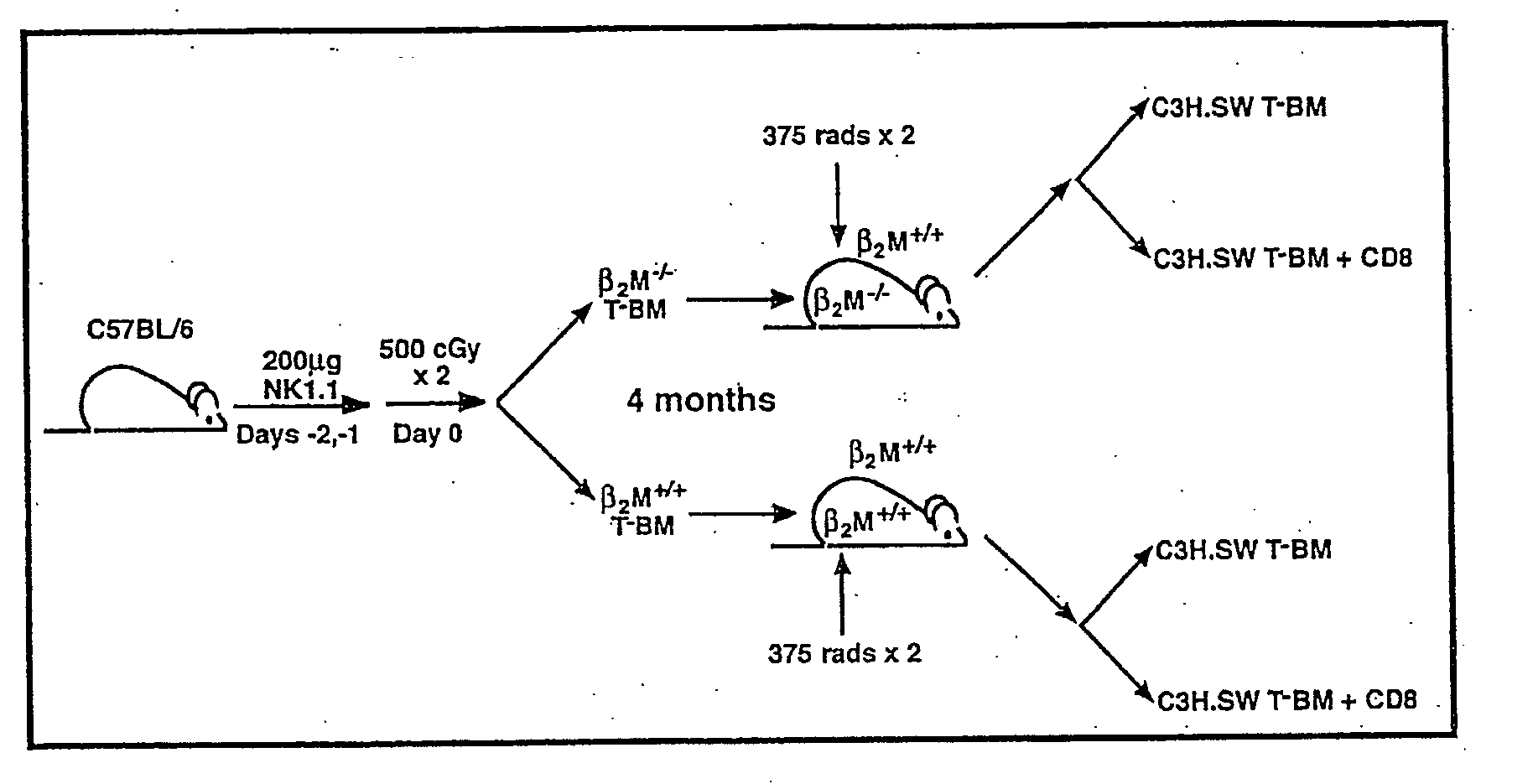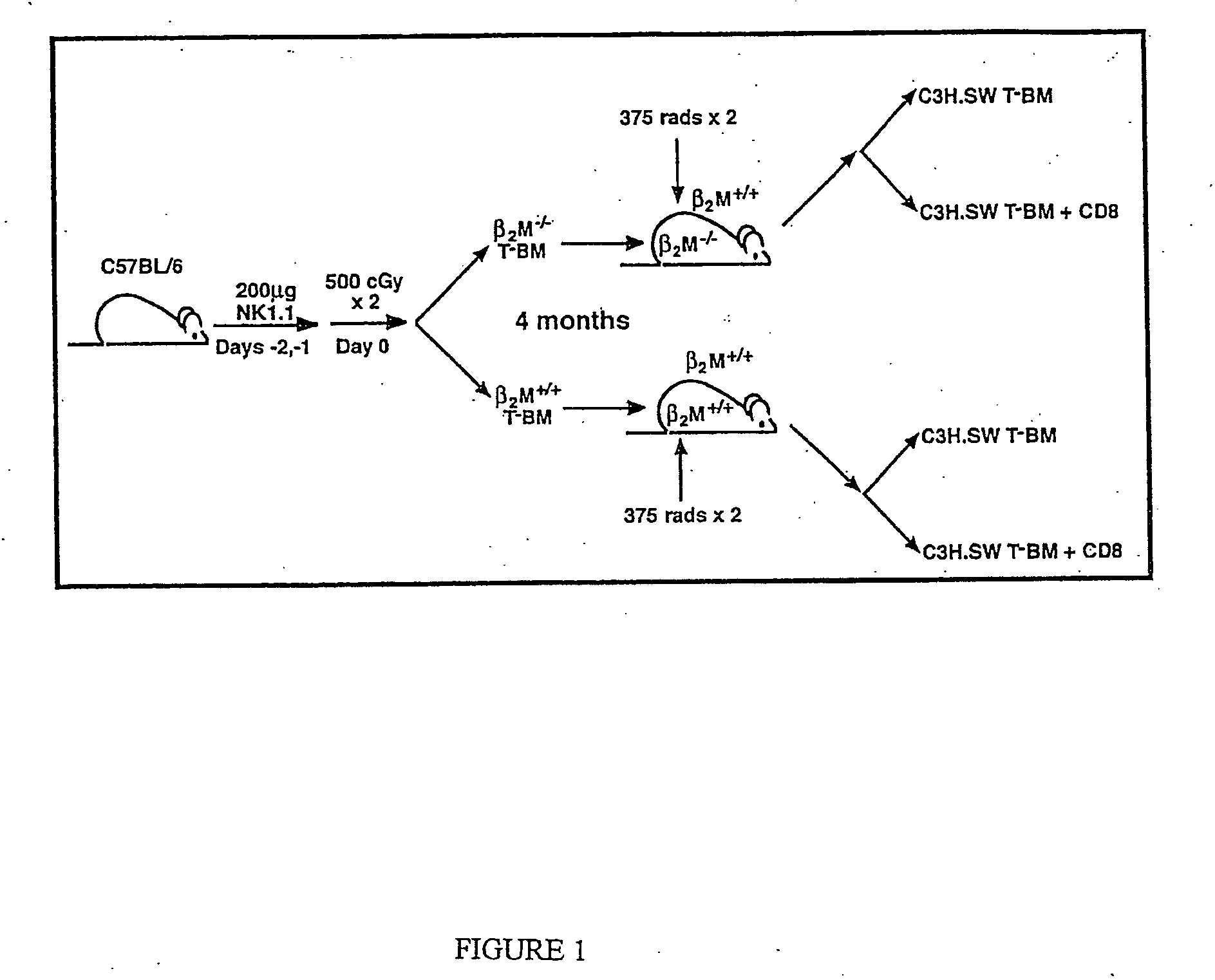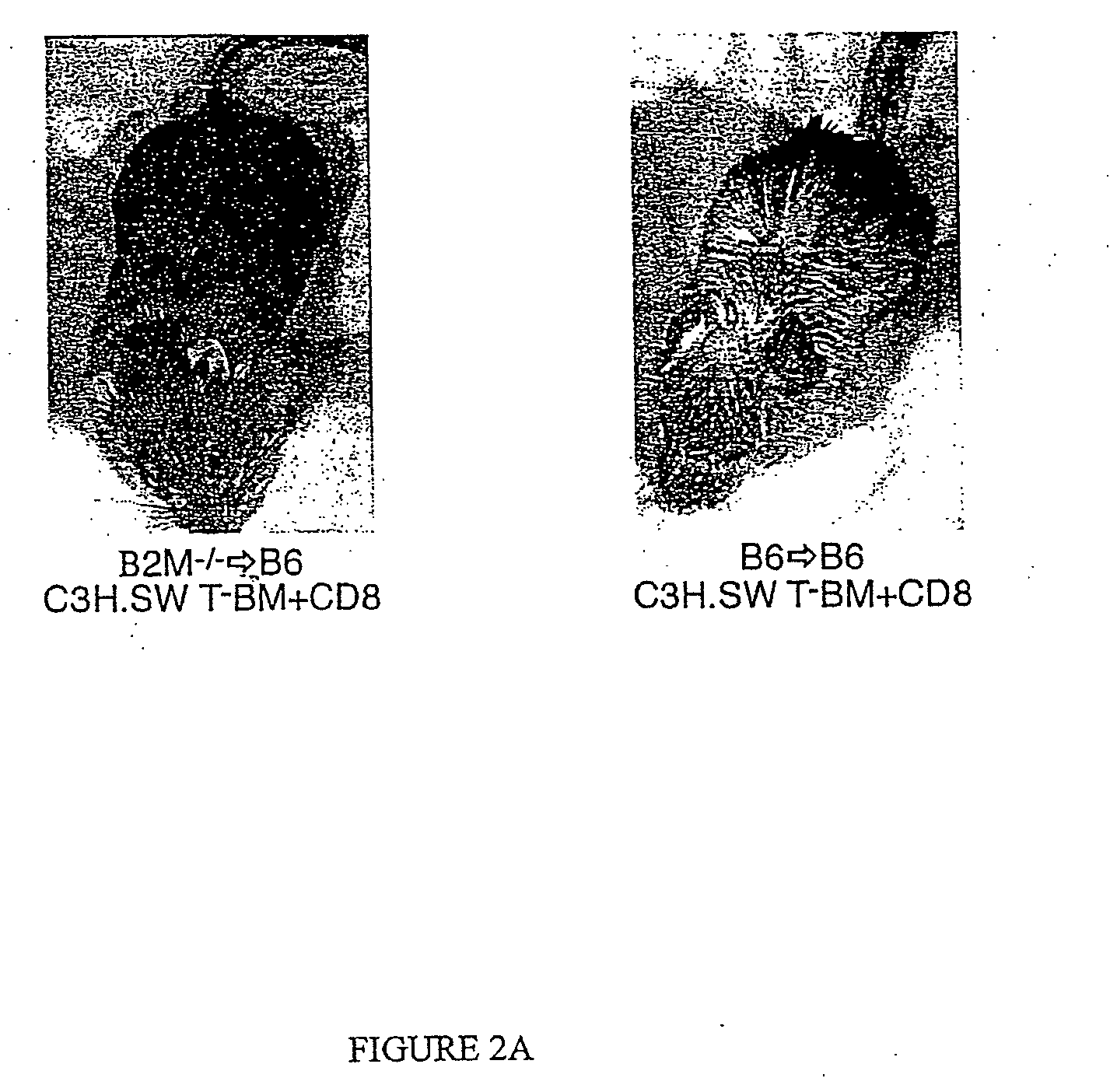Prevention, decrease, and/or treatment of immunoreactivity by depleting and/or inactivating antigen presenting cells in the host
a technology of immunoreactivity and host, which is applied in the direction of antibody medical ingredients, biocide, plant/algae/fungi/lichens ingredients, etc., can solve the problem of less efficient processing
- Summary
- Abstract
- Description
- Claims
- Application Information
AI Technical Summary
Benefits of technology
Problems solved by technology
Method used
Image
Examples
example 1
Prevention of GVHD by Selective Inactivation of Host APCs
[0116] In order to address whether donor or host APCs initiate GVHD, a genetic approach was taken to ask whether host mice whose APCs' were incapable of presenting MHC I restricted peptides would support a GVHD reaction. First, mice were generated that did not express MHC I on their APCs but did express MHC I on target tissues. Such mice were constructed as bone marrow chimeras (FIG. 1) using wild type C57BL / 6 (B6; H-2b) hosts and B6 β-2-microglobulin knock out mice (β2M− / −) as bone marrow donors (β2M− / −→B6) chimeras) (Koller et al., 1990, Science 248:1227-1230). Because β2−)-microgloblulin is part of the MHC I complex, cells obtained from these mice do not express MHC I and therefore cannot present peptide antigens to CD8+ T cells (Koller et al., 1990, Science 248:1227-1230). After waiting four months to allow for (β2M− / −) bone marrow engraftment and APC repopulation, these chimeras were used as recipients in a second alloge...
example 2
Evidence for Depletion of Cells in Normal Host Animals
[0128] Having demonstrated that mice having genetically impaired antigen presenting cells were resistant to the induction of acute GVHD, experiments to demonstrate proof of principle that this could be accomplished in a non-genetic fashion in normal host animals were conducted. Such an approach models the clinical situation in humans. Thus, the feasibility of antibody mediated dendritic cell depletion was assessed in the experiments described herein. This approach has been used to deplete lymphocyte subsets in mice and has been approved for treatment of human malignancies (Baselga et al., 1998, Cancer Res. 58(13):2825-2831; Bolognesi et al., 1998, Brit. J. Haematol. 101(1):179-188; Collinson et al., 1994, Internatl. J. Immunopharmacol. 16(1):37-49; Conry et al., 1995, J. Immunotherapy with emphasis on Tumor Immunology 18(4):231-241; Francisco et al., 1998, Leukemia and Lymphoma 30(3-4):237-245; Ghetie et al., 1997, Mol. Med. 3(7...
example 3
Function of Donor APCs in CD8-Dependent GVHD
Methods for GVL and GVHD Experiments
Mice
[0133] Mice were 7-10 weeks old. C3H.SW mice were purchased from The Jackson Laboratory. B6 and B6 Ly5.1 congenic mice were obtained from the National Cancer Institute. IA—chain-deficient mice (H2-Abl− / − Ly5.1+) mice were obtained from Taconic. C3H.SW (H-2b) B2m− / − mice were made by crossing C3H.SW mice with C3H / HeJ B2m− / − mice (Jackson Laboratory). The absence of MHC I and homozygosity of H-2b was confirmed by flow cytometry of peripheral blood.
Cell Purifications
[0134] CD8 cells were purified from lymph nodes by negative selection, as described (Matte et al. 2004) using biotin-conjugated antibodies against CD4 (clone GK1.5; lab-conjugated), B220 (clone 6B2; lab-conjugated), CD11c (clone HL3; BD Pharmingen) and CD11b (clone M1 / 70; BD Pharmingen), followed by streptavidin-conjugated magnetic beads (Miltenyi Biotec) and separation on an AutoMACS (Miltenyi Biotec). CD8 cells were >90% pure with ...
PUM
| Property | Measurement | Unit |
|---|---|---|
| Biological properties | aaaaa | aaaaa |
| Radioactivity | aaaaa | aaaaa |
Abstract
Description
Claims
Application Information
 Login to View More
Login to View More - R&D
- Intellectual Property
- Life Sciences
- Materials
- Tech Scout
- Unparalleled Data Quality
- Higher Quality Content
- 60% Fewer Hallucinations
Browse by: Latest US Patents, China's latest patents, Technical Efficacy Thesaurus, Application Domain, Technology Topic, Popular Technical Reports.
© 2025 PatSnap. All rights reserved.Legal|Privacy policy|Modern Slavery Act Transparency Statement|Sitemap|About US| Contact US: help@patsnap.com



